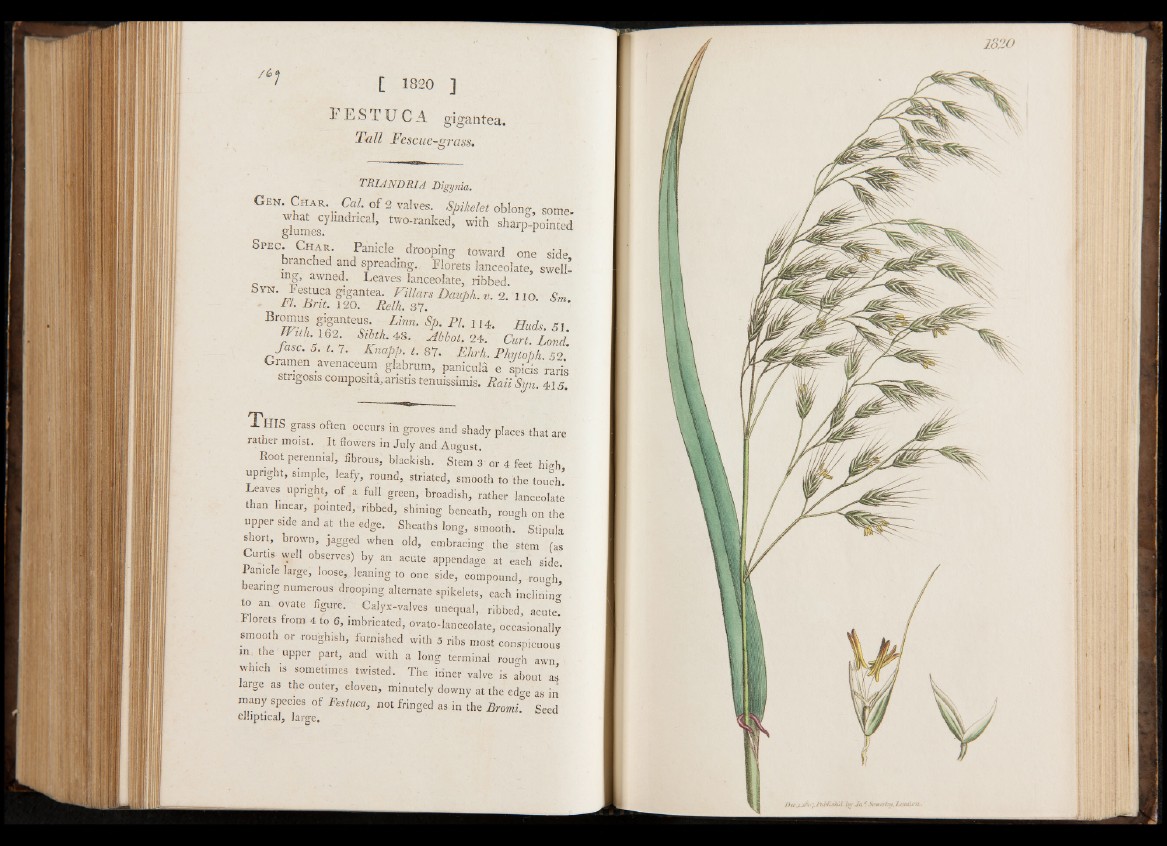
P E S T U C A gigantea.
T a ll Fescue-grass.
TRIJNDRIA Digynia.
Gen. Char Cal. o f 2 valves. Spikelet oblong, some-
J am e s '7 mdn ’ tW° ' ranked’ with sharp-pointed
SPEChmnHIA ! r A * nklej- dr° ° pinS toward °ne side,
branched and spreading. Florets lanceolate, swell!
mg, awned. Leaves lanceolate, ribbed
Syn. Festuca gigantea. Villars Dauph. I 2. 1 10 Sm
' TL B r it. 120. Relh. 37. '
LLinn' SP‘ P L 1 1 4 ‘ Huds- 51. W i th .\m Sibth. 4 8 . Abbot, 2 4 . C u r t .U n d .
Jasc. 5. t. 7. *. 87. £ArA. Phylobh. 52
Gramen avenaceum glabrum, panicula e spiels rari’s
stngosis composita, aristis tenuissimis. R a iiS ijn 4 1 5
T h i s grass often occurs in groves and shady places that are
rather moist. It flowers in July and August.
Root perennial, fibrous, blackish. Stem 3 or 4 feet high
upright, simple, leafy, round, striated, smooth to the touch!
Leaves upright, of a full green, broadish, rather lanceolate
than linear, pointed, ribbed, shining beneath, rough on the
upper side and at the edge. Sheaths long, smooth. Stipula
short, brown, jagged when old, embracing the stem (as
CWtis- well observes) by an acute appendage at each side.
Panicle large, loose, leaning to one side, compound, rough
bearing numerous drooping alternate spikelets, each inclining
to an ovate figure. Calyx-valves unequal, ribbed, acute.
Florets from 4 to 6, imbricated, ovato-lanceolate, occasionally
smooth or roughish, furnished with 5 ribs most conspicuous
im the upper part, and with a long terminal rou^h awn
which ,s sometimes twisted. The inner valve is a°bout as
large as the outer, cloven, minutely downy at the edoe as in
many species of Festuca, not fringed as in the Bromi. Seed
elliptical, large.